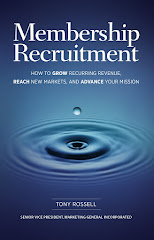
There were some very thoughtful comments on the July 25th post related to the connection between membership participation and membership retention.
The posts raised questions like:
- Are participation and retention connected or do members just renew out of a sense of duty?
- Will that sense of duty be compelling enough to keep the rising generations engage as members?
These questions reminded me of a study we had done for a client a while back. We used data analytics to compare member activity against renewal rates. The reason I love data analytics is that it is research with a 100% response rate. It measures real behavior instead of attitudes or intentions.
In analysis we ran a multi-linear regression analysis comparing members who renewed with those of lapsed.The findings were fascinating because in every case, an interaction or transaction (participation) was a positive predictor of renewal for this association.
- If a member was part of an optional local chapter, he or she was more likely to renew.
- If a member joined a special interest group, he or she was more likely to renew.
- If a member attended an annual convention, he or she was more likely to renew. In fact, the more conventions attended, the higher the renewal rate.
I have found this pattern repeated with other associations.
Karen Gebhart of the Aircraft Owners and Pilots Association (AOPA) spoke with me at an ASAE meeting and noted a corresponding pattern among their 400,000+ members. AOPA member record tracking found that members who called the association’s '800' number compared to those who did not showed an improved retention rate.
The bottom line is that research shows that an important predictor of membership retention is some level of participation or interaction with the association. A sense of duty to be a member is not enough to keep a member now and will not likely be enough in the future.
An association that actively engages members -- at almost any level -- is one that is more likely to enjoy higher membership retention.













